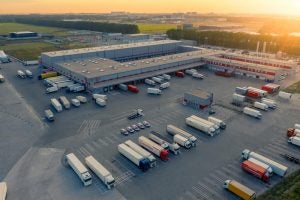New research from EDF–Making the Invisible Visible: Shining a Light on Warehouse Truck Air Pollution—shows some 15 million people live within a half-mile of a warehouse in 10 states across the United States. The research demonstrates how the burden from truck-related air pollution exposure is not evenly distributed. In all of the states studied, warehouses and the trucks they attract are disproportionately located in Black, Latino, Asian or American Indian communities as well as areas of low wealth.

While warehouses and the trucks that deliver their goods became more common after the deregulation of the trucking industry, the explosion of just-in-time production and next-day delivery has brought more of these facilities much closer to people’s homes and in more communities than ever before. Understanding who is bearing the brunt of the health burdens associated with warehouse activity can help policymakers, businesses and communities implement smart, targeted policies to reduce emissions and protect health, keep kids in school and improve workforce productivity.
How we did it: Our teams identified warehouse location data and analyzed it through the lens of our Proximity Mapping framework that allowed us to learn demographic information about the people living near them.
Why it matters: More than 1 million children under 5 live within a half-mile of warehouses, making them more vulnerable to adverse health impacts like asthma. Their families are more vulnerable to adverse birth outcomes, dementia, heart disease and stroke, , because of the pollution from the trucks that serve warehouses.
The good news: Low-cost solutions are available today to reduce the pollution burden on these communities. Increased air quality monitoring and zero-emissions goods transport are all tools we can tap into now to reduce harm from truck pollution.
Meanwhile companies are investing in zero-emission delivery vans, yard trucks and even long-haul vehicles. States can help advance this trend through policies such as the Advanced Clean Trucks rule, which eases permitting requirements for charging infrastructure. The EPA’s recently proposed tailpipe regulations are designed to ensure that half of up to half of new urban delivery freight vehicles sold by 2032 will be zero-emitting. Indirect Source Review rules are a tool for state and local leaders to ensure warehouses don’t burden their neighbors.
But we can’t let up. Communities deserve to know what kinds of businesses are operating near their homes and schools, especially if they attract vehicles that are harmful to their health. We must demand greater transparency around warehouse locations and the extent of pollution generated at warehouses. Transparency around health costs and the cost of clean up is essential for fairness to those already impacted by warehouses, while alerting communities facing warehouse expansion to the threats posed by their new neighbors.
